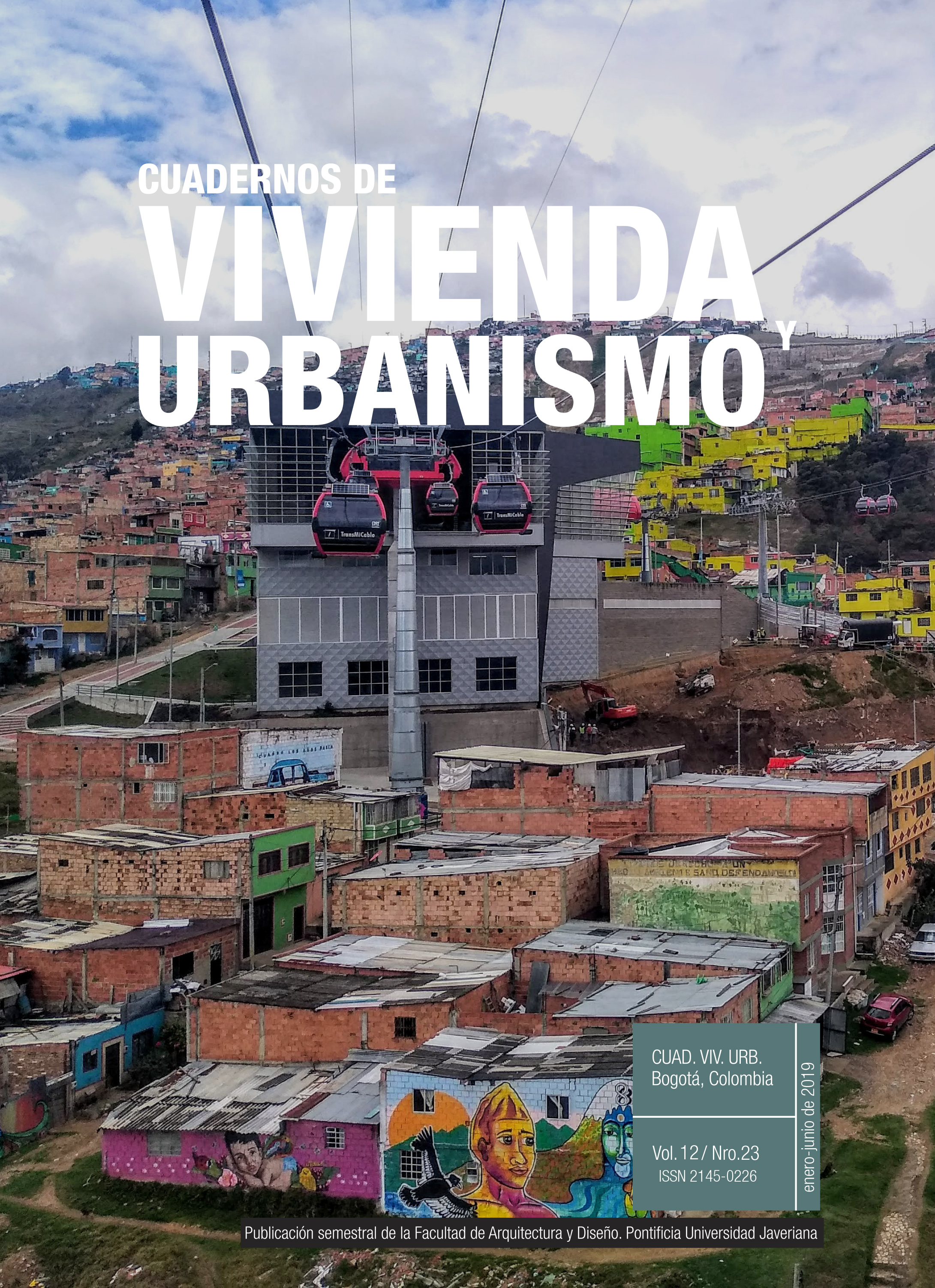Resumen
El siguiente trabajo se propone interpretar la situación actual del mercado del suelo y la vivienda en la ciudad de Tandil. Para este fin, se utilizará la teoría de la renta del suelo urbano, la cual permite conocer los procesos subyacentes en la conformación del mercado de la vivienda en las ciudades, la presencia de las distintas clases de rentas en la conformación de los precios de los inmuebles y la incidencia que éstas poseen para explicar la disposición espacial de las áreas residenciales.
Se propone, además, una tipología habitacional que permite caracterizar y dar cuenta de las diversas fuerzas que convergen en las áreas residenciales de la ciudad de Tandil, una aglomeración intermedia de la provincia de Buenos Aires, Argentina. Con este objetivo, se utilizan fuentes de información primaria y datos del Censo Nacional de Población, Hogares y Viviendas de 2010 (Instituto Nacional de Estadísticas y Censos [Indec], 2010). La cartografía es confeccionada mediante Sistemas de Información Geográfica.
Baer, L. (2011). El mercado de suelo formal de la ciudad de Buenos Aires en su contexto metropolitano (Tesis doctoral). Universidad Nacional de Buenos Aires, Buenos Aires,
Argentina.
Burgess, E. W. (1925). The growth of city: an introduction to a research project. En R. E. Park, E. W. Burgess y R. D. Mckenzie (eds.), The City (pp. 47-62). Chicago, Estados Unidos: The University of Chicago Press.
Buzai, G. (2014). Mapas Sociales Urbanos. Buenos Aires: Lugar editorial S. A.
Del Río, J. P. (2014). Transformaciones habitacionales en la Región Metropolitana de Buenos Aires. El pasaje del neoliberalismo al neodesarrollismo urbano. Geograficando, 10(2), 1-33.
Fernández-Equiza, A. M. (2017). El crecimiento de la ciudad de Tandil, actores y conflictos. En Debates sobre naturaleza y desarrollo. Análisis a distintas escalas (pp. 235-277). Tandil, Argentina: Red de Editoriales de Universidades Nacionales. Recuperado de: http://igehcs-conicet.gob.ar/wp-content/uploads/Debates.pdf
Harris, C. D., y Ullman, E. L. (1945). The nature of cities. Annals of the American Academy of Political and Social Sciences, 242, 7-17.
Harvey, D. (1985). The Urbanization of Capital. Studies in the History and Theory of Capitalist Urbanization. Oxford: The Johns Hopkins University Press. Basil Blackwell ltd.
Hoyt, H. (1939). The structure and growth of residential neighborhoods in American cities. Washington, D. C.: Federal Housing Administration.
Instituto Nacional de Estadísticas y Censos (Indec). (2010). Censo Nacional de Población, Hogares y Viviendas. Recuperado de http://www.censo2010.indec.gov.ar/.
Jaramillo, S. (2009). Hacia una teoría de la renta del suelo urbana. Bogotá: Universidad de los Andes.
Lan, D. (2011). Territorio, industria, trabajo. División territorial del trabajo y espacio producido en la industria de la ciudad de Tandil-Argentina (Tesis doctoral). Universidad Nacional de La Plata, La Plata, Argentina.
Lan, D., Linares, S., Di Nucci, J., y López-Pons, M. (2010). La lógica de la organización espacial en la ciudad de Tandil. En D. Elias, M. E. Beltrão-Sposito y B. Ribeiro-Soares (orgs.), Agentes econômicos e reestruturação urbana e regional: Uberlândia e Tandil (pp. 29-155). São Paulo: Expressão Popular.
Linares, S. (2010). Aplicación de Sistemas de Información Geográfica al estudio de la segregación socioespacial urbana: el caso de la ciudad de Tandil. En G. Buzai (ed.), Geografía y Sistemas de Información Geográfica. Aspectos conceptuales y aplicaciones. Luján, Argentina: Gesig-Proeg.
Ministerio del Interior. (2005). Plan de Desarrollo Territorial de Tandil. Recuperado de https://www.mininterior.gov.ar/planificacion/pdf/planes-loc/BUENOSAIRES/Plan-Desarrollo-Territorial-Tandil.pdf
Topalov, C. (1984). Ganancias y rentas urbanas. Elementos teóricos. Madrid: Siglo XXI Editores de España S. A.
Ward, J. H. (1963). Hierarchical Grouping to Optimize an Objective Function. Journal of the American Statistical Association, 58, 236-244.
Esta revista científica se encuentra registrada bajo la licencia Creative Commons Reconocimiento 4.0 Internacional. Por lo tanto, esta obra se puede reproducir, distribuir y comunicar públicamente en formato digital, siempre que se reconozca el nombre de los autores y a la Pontificia Universidad Javeriana. Se permite citar, adaptar, transformar, autoarchivar, republicar y crear a partir del material, para cualquier finalidad (incluso comercial), siempre que se reconozca adecuadamente la autoría, se proporcione un enlace a la obra original y se indique si se han realizado cambios. La Pontificia Universidad Javeriana no retiene los derechos sobre las obras publicadas y los contenidos son responsabilidad exclusiva de los autores, quienes conservan sus derechos morales, intelectuales, de privacidad y publicidad.
El aval sobre la intervención de la obra (revisión, corrección de estilo, traducción, diagramación) y su posterior divulgación se otorga mediante una licencia de uso y no a través de una cesión de derechos, lo que representa que la revista y la Pontificia Universidad Javeriana se eximen de cualquier responsabilidad que se pueda derivar de una mala práctica ética por parte de los autores. En consecuencia de la protección brindada por la licencia de uso, la revista no se encuentra en la obligación de publicar retractaciones o modificar la información ya publicada, a no ser que la errata surja del proceso de gestión editorial. La publicación de contenidos en esta revista no representa regalías para los contribuyentes.



